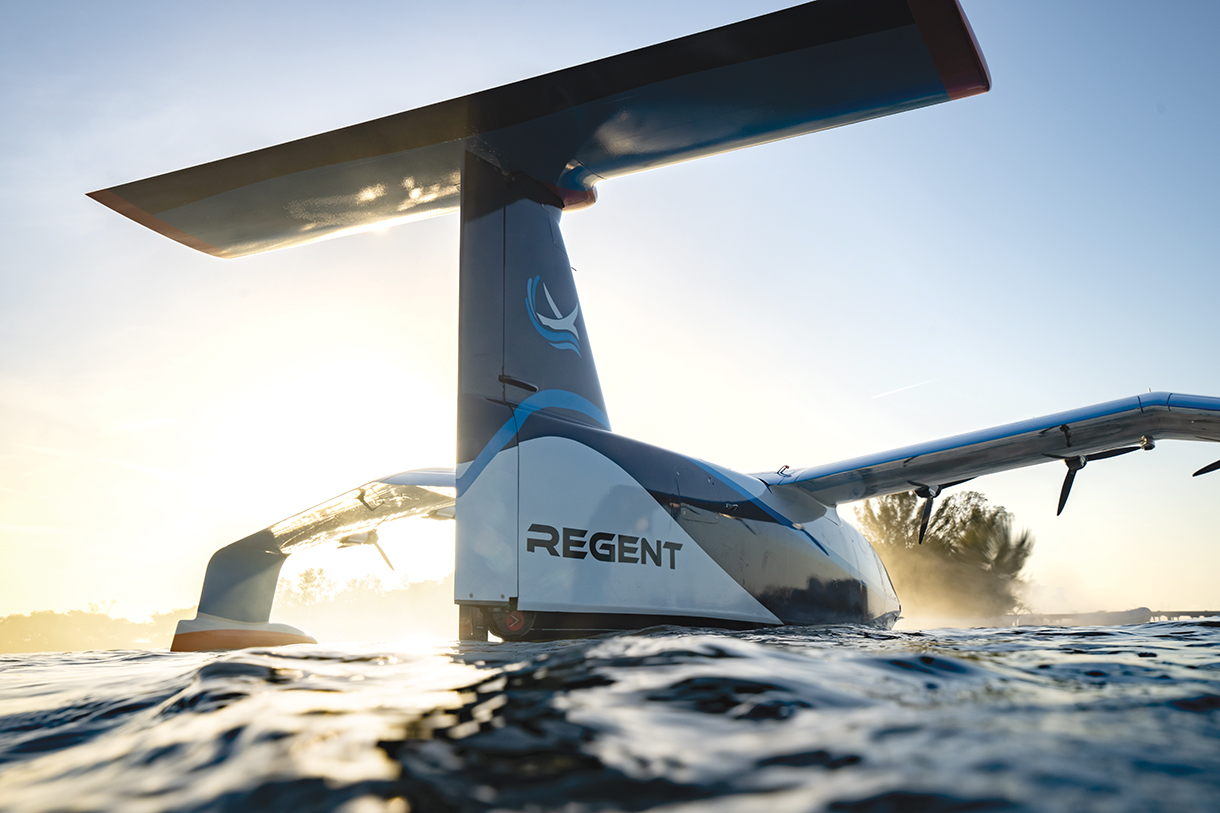
Electric Seaplanes Prepare to Launch
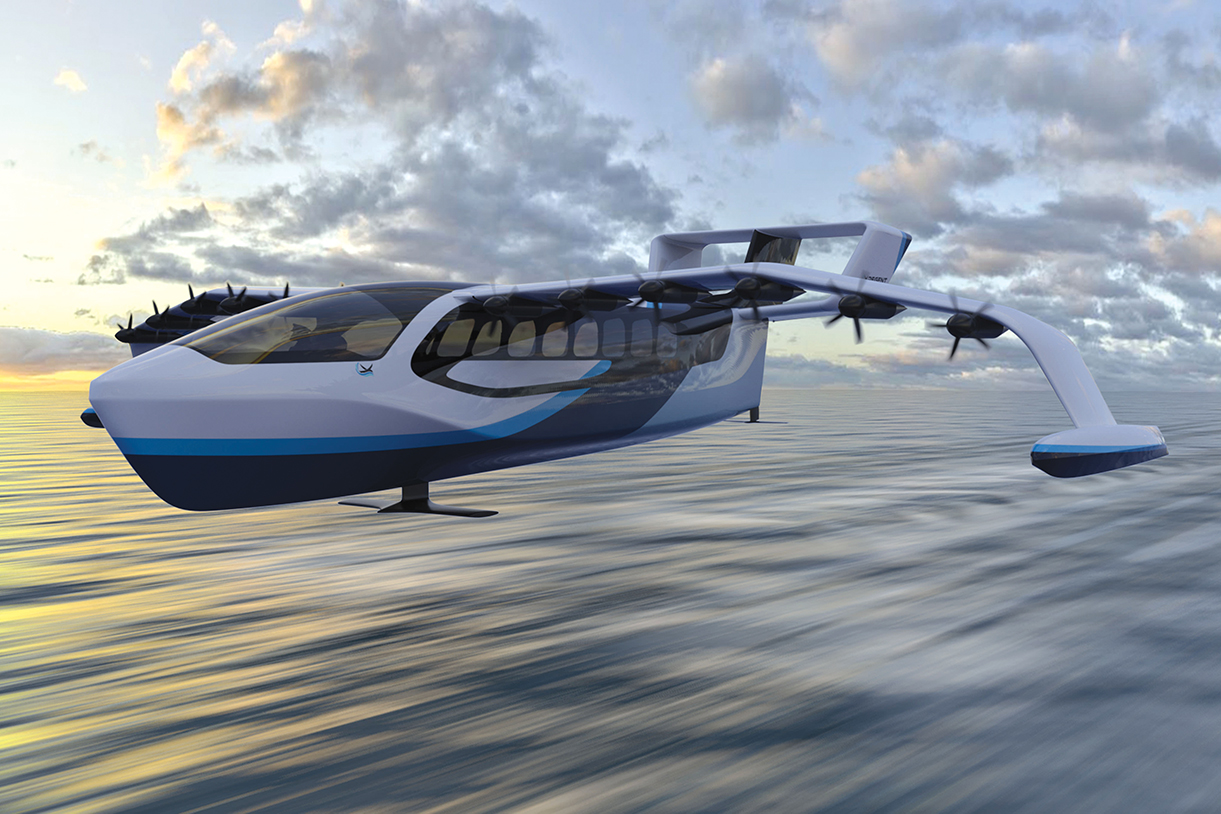
Your next flight may start with a trip to the shore, if a new breed of aviation pioneers succeeds in resurrecting seaplanes, borne aloft by electric motors, as an environmentally friendly mode of travel.
Most of the amphibious aircraft in use today are floatplanes that use slender floats mounted like feet under the fuselage for buoyancy. Aircraft designers, however, are finding inspiration from the past, looking to flying boats with hulls purposely designed for flotation. In the 1930s, for example, the Boeing 314 Clipper was the last word in luxury in transoceanic air travel. Then World War II and the proliferation of long land runways around the world made seaplanes largely redundant. Today, however, high airport development costs, a changing climate, an emphasis on zero emissions, military interest, and new technical approaches are fueling a resurgence.
Perhaps the most innovative among amphibious aircraft under development and the most likely to see service soonest prefers to be known as a seaglider. During the height of the Cold War, the Soviet Union developed a cross between a plane and a boat, known as the ekranoplan by the Russians and the Caspian Sea Monster by Western analysts due to its enormous size. The ekranoplan flew using a wing-in-ground effect (WIG), a cushion of air that forms between the wings and ground during low-altitude flight. WIG greatly reduces drag, allowing heavy loads to be carried over long distances, and it is especially effective over water, as there are fewer obstacles in the flight path. However, only one missile-launching ekranoplan was ever built, due to cost and design difficulties.
That fly-low-and-fly-fast mantra is being embraced today, but with a twist. From Boston-based REGENT (regentcraft.com), an electric seaglider uses WIG but marries it to latter-day hydrofoil tech like that used by catamarans racing in America’s Cup. With its V-shaped hull, the emissions-free seaglider gets underway like a traditional boat. As it speeds up for takeoff, the hull rises out of the water using a set of hydrofoils. This means a lot less energy is required to get airborne. The hydrofoils retract after takeoff and then descend again for landing.
REGENT, which stands for Regional Electric Ground Effect Nautical Transport, says a prototype will begin testing in 2024 with in-flight service expected the following year. The expected range for its 12-passenger Viceroy model is 180 miles at a cruise speed of 180 mph from eight motors. The Viceroy is 57.5 feet long and has a wingspan of 65 feet. The 3-year-old company has even bigger plans with a 100-seat Monarch model to follow: Hawaiian Airlines has already put in an order. REGENT, in fact, says it has over $8 billion in orders for 400 seagliders and sees its seagliders fulfilling a number of roles, ranging from tourism to ferry service. Brittany Ferries, for example, plans to use seagliders as ferries between France and England by 2028. Critically, from a timetable standpoint, the seagliders are being classified as boats to speed up the certification process.
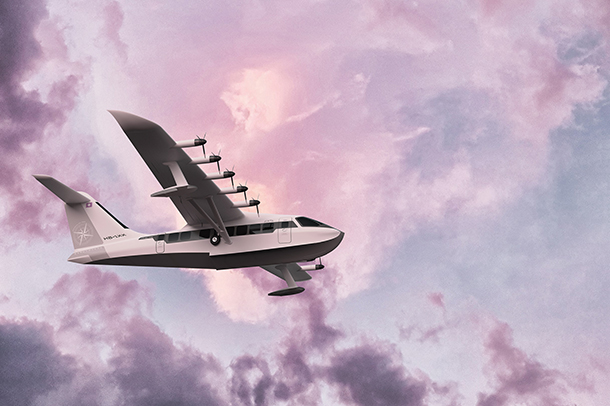

Meanwhile in Europe, electric amphibious aircraft are under development as well. In Switzerland, Jekta (jekta.swiss) is building a 19-passenger electric seaplane with tourism expressly in mind. Jetka envisions its PHA-ZE 100 (Passenger Hydro Aircraft Zero Emission 100) amphibious aircraft whisking customers to remote islands by late 2028. A VIP configuration has a salon with couches and seats for four. Jetka says it will build batteries into the wing so they can be swapped out for a fast turnaround time. The PHA-ZE 100, which has a top speed of 155 mph and a maximum altitude of 10,000 feet, will be able to land on traditional runways in the event of rough seas. Honeywell is supplying the required avionics and power train systems.
In Norway, Elfly Group (el-fly.no) envisions electric seaplanes as a perfect way to link the country’s many islands. Twin electric motors atop the Noemi (no emissions) fuselage provide a top speed of 155 mph and an approximate 120-mile range. A nine-passenger model is being developed in addition to a more luxurious, six-seat VIP configuration. A large cargo door makes it suitable for freight roles as well as an air ambulance. The overall design is inspired by past Mallard and Twin Otter amphibious planes. Elfly plans to launch a prototype in 2025. A fleet of 15 is planned for 2030 to serve a country with 450,000 lakes and over 1,000 fjords. Elfly thereafter hopes to expand to other short-hop markets. Norway now requires all domestic flights to be electric by 2040.
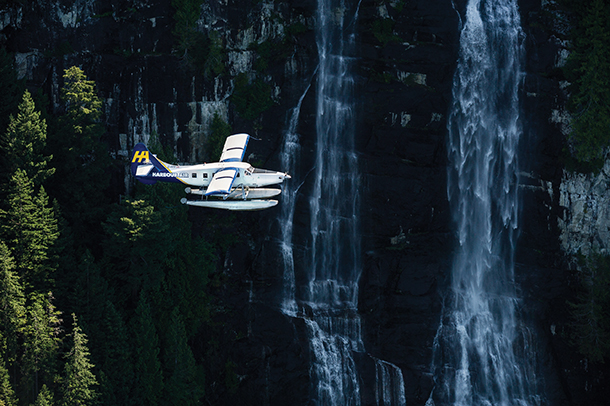
Floatplane operators, meanwhile, do not intend to be left behind at the dock. Harbour Air Seaplanes (harbourair.com), the longtime operator of floatplanes between Vancouver and Victoria in Canada’s British Columbia, is flight-testing electric motor conversions for floatplanes. Among innovative new designers is Icon (iconaircraft.com), which makes the sport-class Icon A5 with fold-up wings, a propeller aft of the cockpit, and a clever angle-of-attack indicator that makes it easier to fly. Some older amphibious aircraft retain a high profile: The Hawaii Mars II, dating from 1945, is still flying as a firefighting water bomber, dousing California wildfires with 7,200 gallons of water per mission.
It would be naïve to suggest that the renewed interest in seaplanes doesn’t include a military/political bent. Ongoing tensions with China have increased interest in island-hopping, runway-independent amphibious aircraft. Lockheed Martin is investing in REGENT with the aim of developing a military variant of a seaglider for possible use by US Marines and special operations forces. “We believe that REGENT seaplanes can bring tailored solutions to the future battlespace,” says Chris Moran, vice president and general manager of Lockheed Martin Ventures. WIG-style aircraft are appealing for yet another reason: They are generally able to operate below enemy radar while avoiding easily targeted locations like traditional airfields.
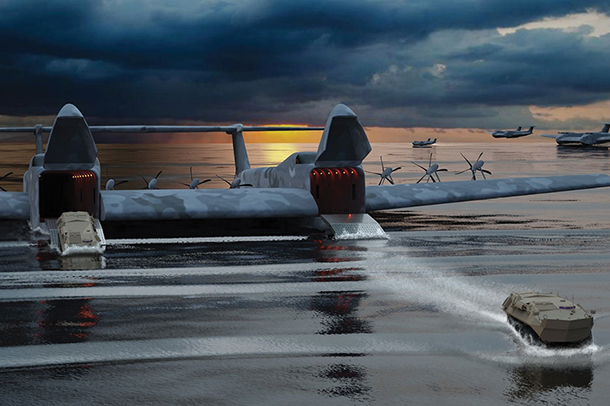
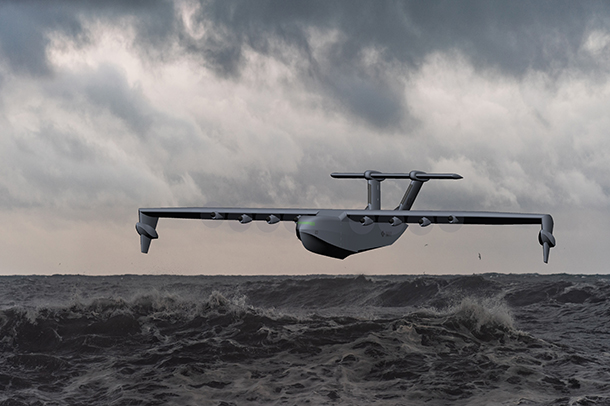
Meanwhile, DARPA (darpa.mil), the research arm of the US Defense Department, has tasked General Atomics (ga.com) and Aurora Flight Sciences (aurora.aero), a Boeing subsidiary, to develop the WIG-style Liberty Lifter seaplane, akin to a C-17 Globemaster III cargo plane, which can fly 6,500 nautical miles, carry 100 tons of material, and land in rough seas while also being able to operate like a traditional aircraft up to 10,000 feet. The General Atomics design is particularly radical in that it uses a twin-hull design, while the Aurora concept is more along traditional flying boat lines. Aviation buffs may recall the massive 1947 WIG-effect Spruce Goose developed by Howard Hughes for a similar mission. The plane flew for about a mile before being mothballed. The US Air Force Special Operations Command is also considering how to add removable flotation devices to existing cargo planes for resupply of forces on remote atolls.
The US military has been enviously eyeing the ShinMaywa US-2 amphibious aircraft in service with Japanese air and sea rescue defense forces. The large ShinMaywa US-2 can operate in rough seas with swells of nine feet and is nearly twice as fast as a helicopter and has a longer range. An amphibious aircraft like the ShinMaywa could perform reconnaissance and anti-submarine tasks similar to the legendary PBY Catalina Flying Boat effectively used in World War II. Such a move would likely mean resurrecting a class of ship known as seaplane tenders from that era. This would mark a sea change in attitudes—the US military largely lost interest in seaplanes in the 1950s when a jet-powered seaplane capable of carrying nuclear missiles was canceled because submarines proved operationally more effective.
All this activity on the military side suggests that seaplane development is to be well-funded going forward, with likely spillover effects for civilian craft. Meanwhile, the biggest amphibious aircraft since the Spruce Goose has already taken wing in China. The AG600 Kunlong is seen by China as a flexible tool for island-hopping in the South China Sea. The AG600 Kunlong is currently the largest seaplane in the world with a wingspan comparable to a Boeing 737 passenger plane and able to carry as many as 50 passengers. The Russian Navy is opting for a jet-powered amphibious aircraft, called the Beriev Be-200 Altair, with a top speed of 422 mph, a 72-passenger capacity, and a range of 2,000 miles that can be configured for multiple roles ranging from firefighting to reconnaissance. The first deployment is in the Caspian Sea. Another sea monster has emerged.
Photo credits: Courtesy Regent (2), Jekta, Elfly, Harbour Air Seaplanes, ICON Aircraft, General Atomics-Aeronautical Systems Inc., and Aurora Flight Sciences




